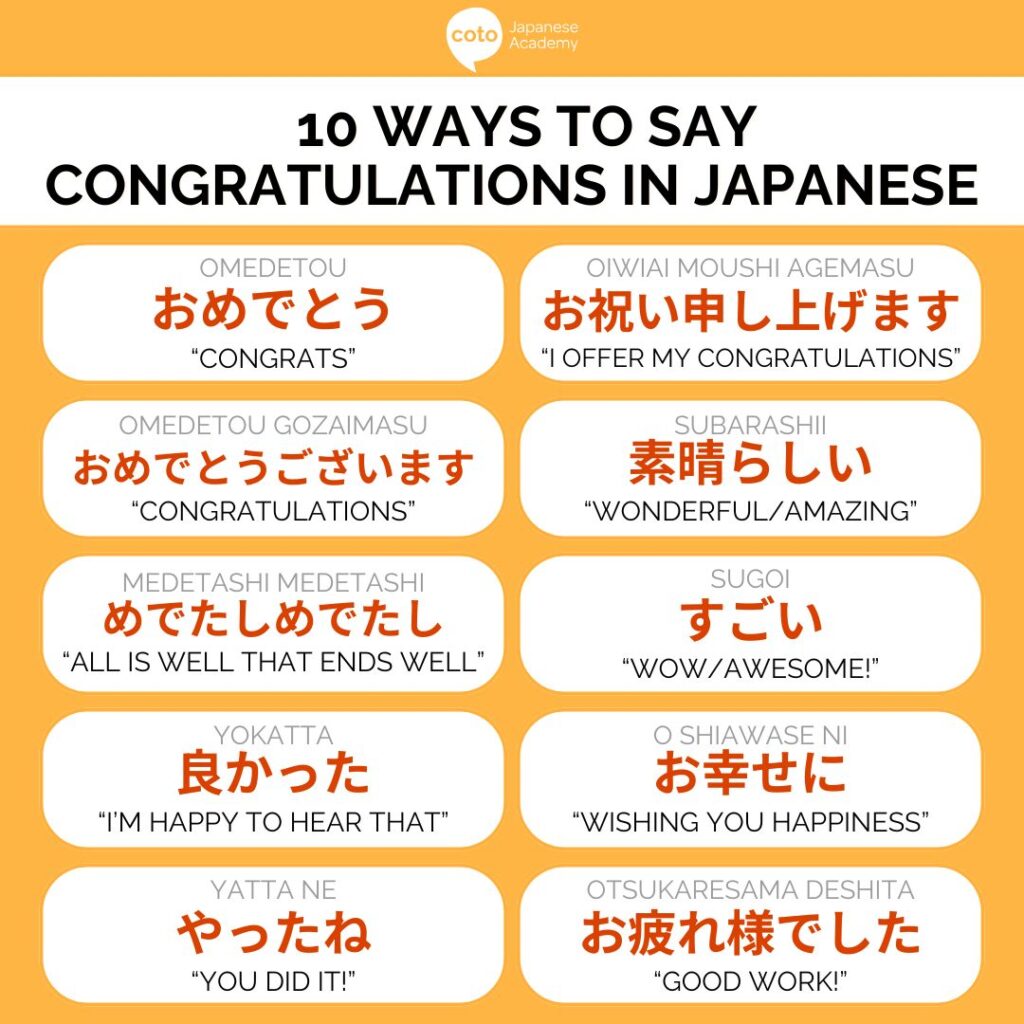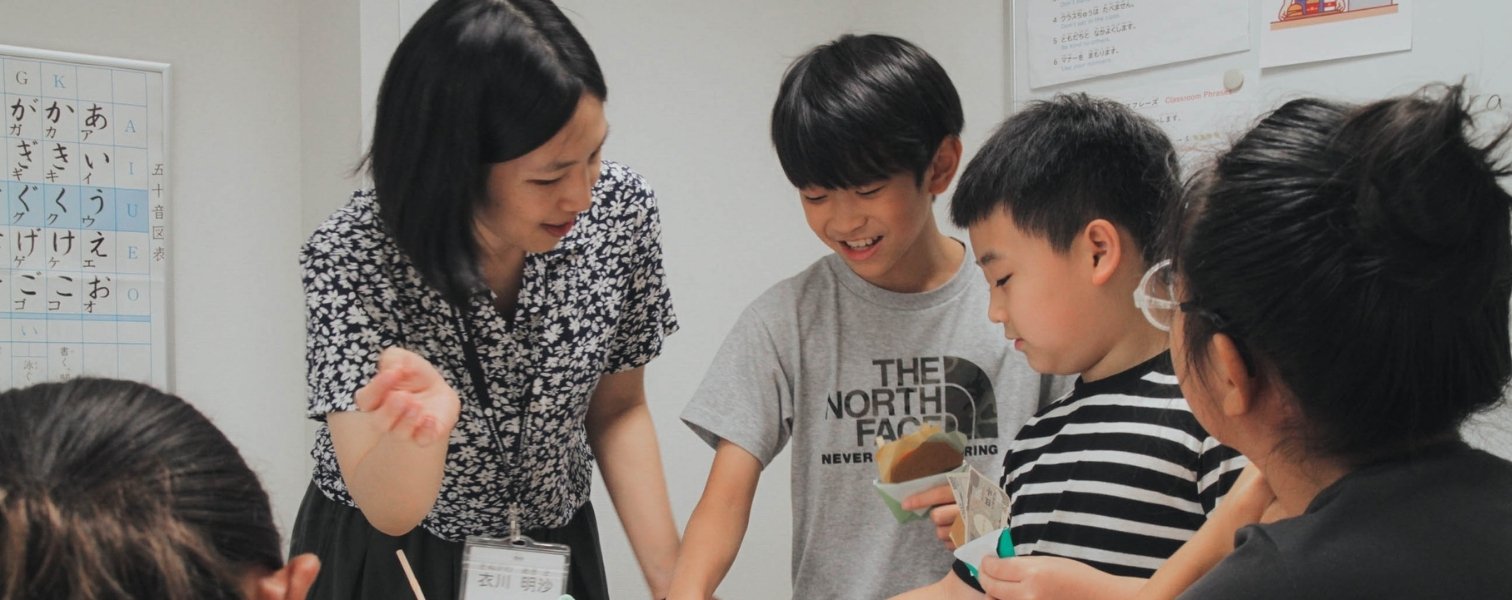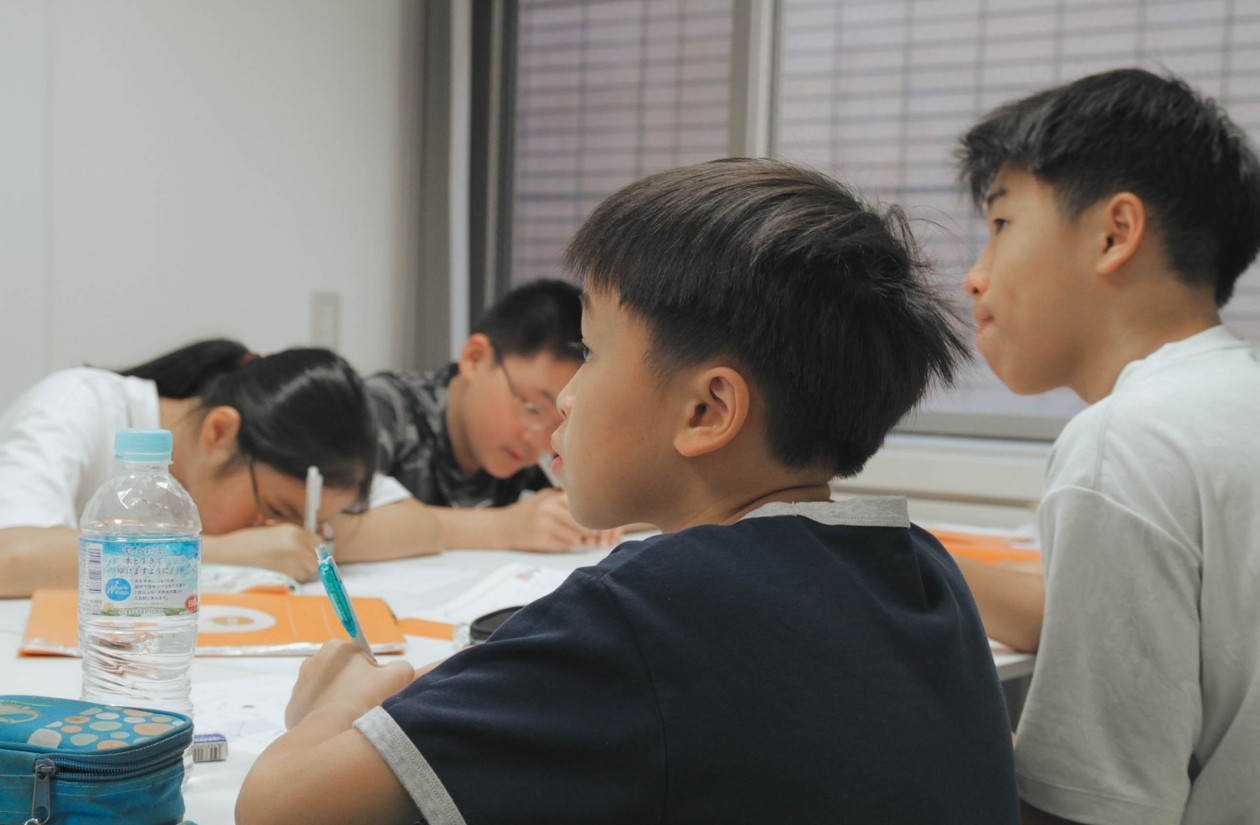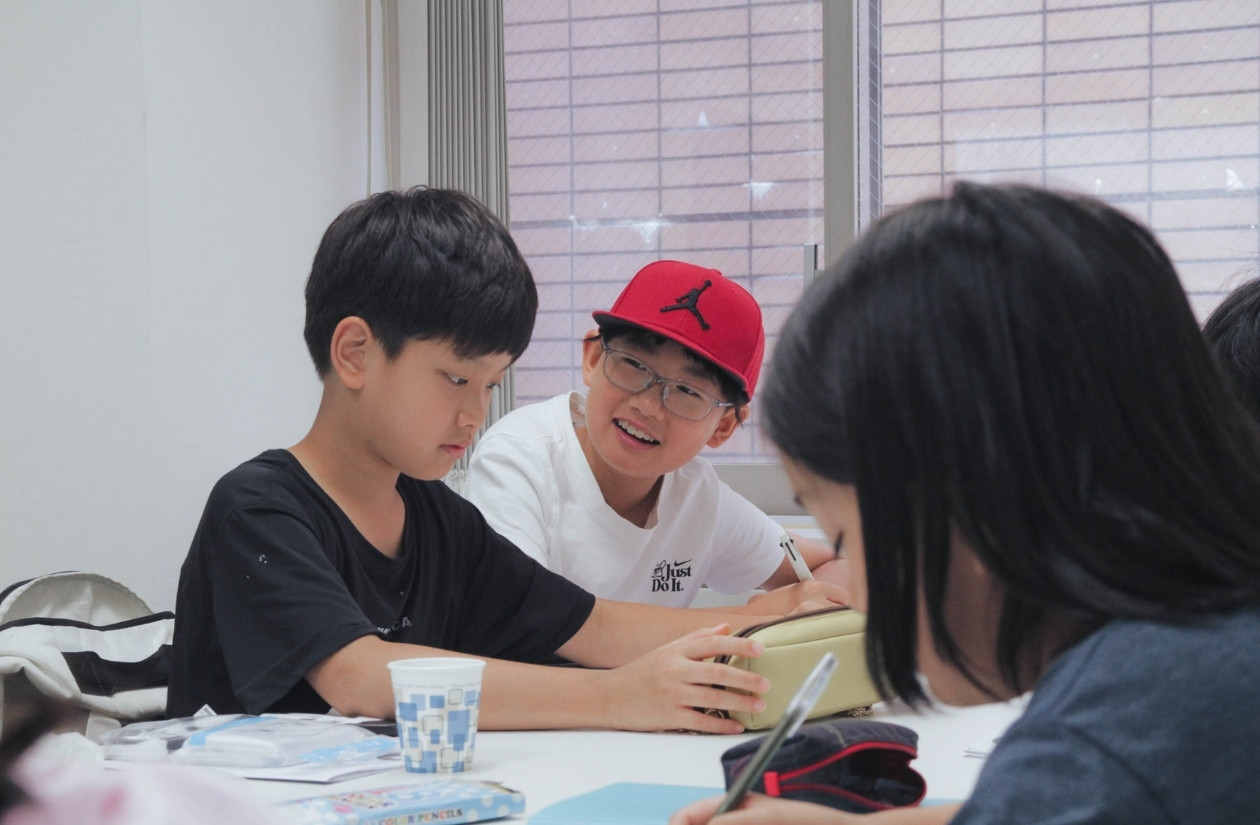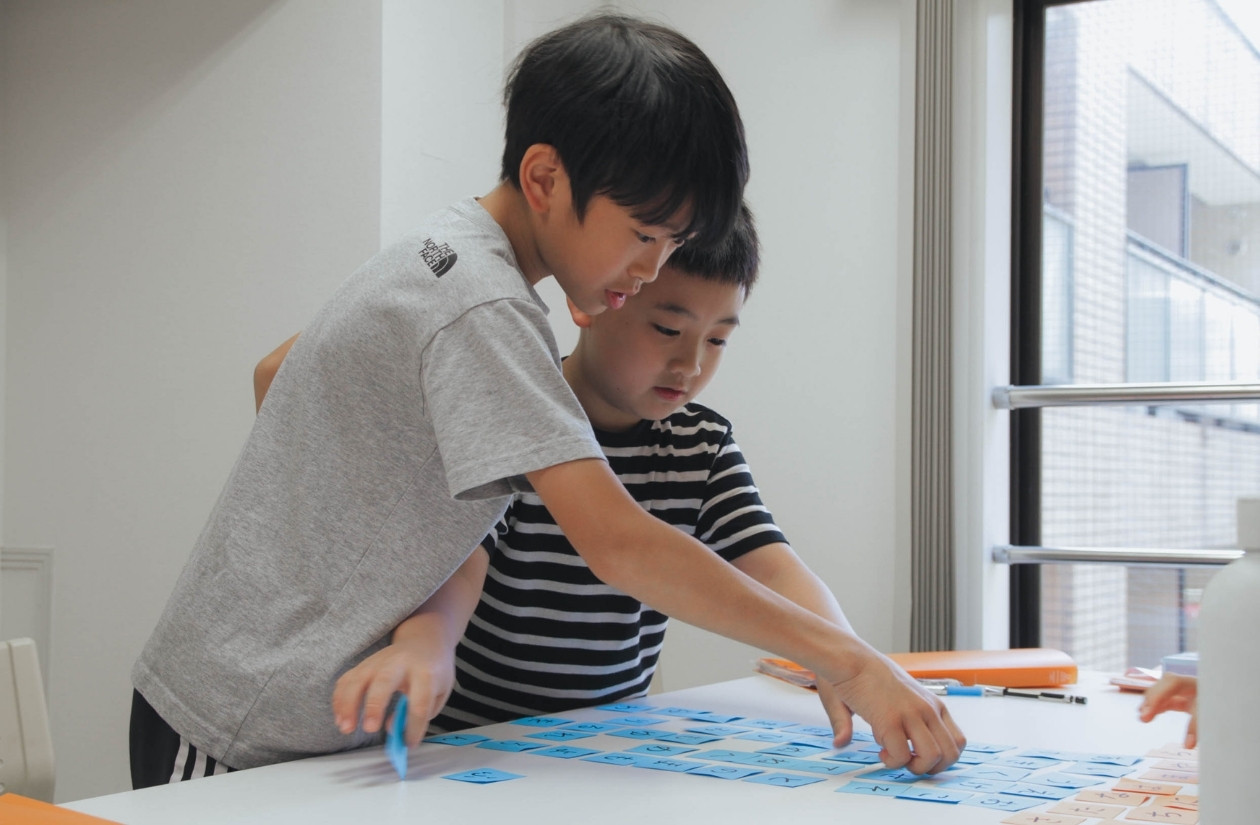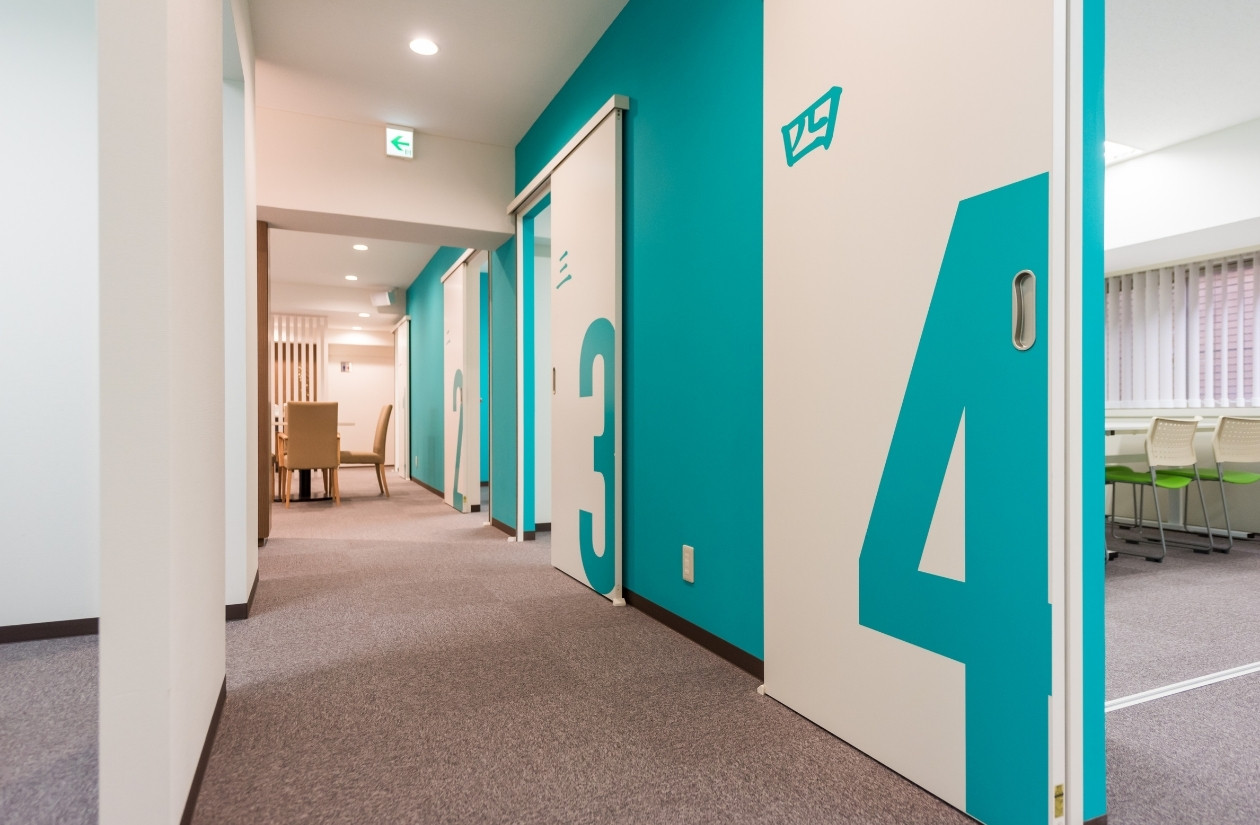Welcome to Coto Radio, a Japanese learning podcast by Coto Japanese Academy, Japan’s No. 1 Japanese language school. Each episode, our host combines captivating storytelling with engaging conversations, all delivered in clear, natural Japanese.
Just as people in the United States often turn to horoscopes, birth charts, and star signs to explain personality, and Chinese people look to zodiac signs, in Japan, many believe that a person’s blood type can reveal key aspects of their character. This belief, which also has followers in Korea, suggests that blood types may indicate whether someone is creative, stubborn, confident, or even a bit selfish.
This cultural phenomenon emerged in Japan in the 1970s and associates personality “archetypes” based on blood type. Spontaneity is a trait dominant in type Bs, confidence (and sometimes stubbornness) for type Os, and so on. This topic might seem like a fun conversation starter, but some take it very seriously — seriously enough that it can influence friendships and dating, and even create negative bias towards certain groups.
In this episode of Coto Radio, our teachers explore the curious world of blood type personality theory. Listen to the podcast on Spotify below, or read the translated transcription.
The Origin of Blood Type Personality Belief
The episode’s main topic is the Japanese cultural phenomenon of blood type personality theory. Younger people in Japan often consider blood type when judging compatibility with others. Both hosts discuss how some Japanese believe that blood type determines personality traits: A-types are meticulous, B-types are selfish, O-types are confident, and AB-types are unusual.
Kinjo-sensei explains that the belief originated from early research by a German scientist and later a Japanese psychologist, who conducted studies on his family of only 11 people, though the original research was relatively small and anecdotal.
Despite this, the idea spread in Japan, influencing popular culture and even morning news segments with “blood type fortune-telling.” The discussion highlights the role of tradition, social reinforcement, and curiosity in shaping collective perceptions, even when scientific support is weak. It also shows the significance of understanding local beliefs to navigate social interactions in Japan.
What Your Blood Type Says About You
So what are these personality traits revealed through blood types? Here is a detailed breakdown.
Type A
People with Type A blood are considered thoughtful, responsible, and meticulous. They are often perfectionists who like structure, planning, and following rules. They value harmony in social situations and try to avoid conflict. On the flip side, they can be overly anxious, overthink decisions, and sometimes appear too cautious or reserved.
Type B
Type B people are seen as creative, passionate, and independent. They enjoy freedom and tend to follow their own path, which makes them energetic and fun but sometimes unpredictable or perceived as selfish. B types are often suited for creative or innovative work and are compatible with other B types or AB types, though they may have difficulties connecting with highly structured or rule-oriented individuals.
Type O
Those with Type O blood are considered outgoing, confident, and ambitious. They are natural leaders who are friendly, generous, and optimistic, though they can occasionally be stubborn or domineering. In professional and social environments, O types are goal-oriented, enjoy challenges, and are good at motivating others. They tend to get along well with O or B types, but compatibility with AB types is thought to be more difficult.
Type AB
Type AB individuals are regarded as rational, calm, and adaptable, often combining traits of both A and B types. They are observant, diplomatic, and excellent problem-solvers, but they can sometimes appear detached or mysterious. AB types are well-suited to analytical or multitasking roles and are generally compatible with AB or A types.
Social Implications and Awareness of Blood Type Stereotypes
For some, talking about personality traits linked to blood types can be a fun conversation starter, like a casual water-cooler topic. But for others, it’s taken more seriously, and this can lead to negative consequences. There’s even a term for it: “blood type harassment,” which refers to the discomfort or judgment people can feel when others assume their personality based solely on their blood type.
While these conversations can be interesting, learners and residents should approach them with a critical mindset. The key takeaway is that cultural knowledge is most useful when combined with sensitivity. Knowing about Japanese customs, like blood type discussions, can help people connect socially, but it’s important not to reinforce stereotypes or make assumptions about others.
Ready to listen to the full transcript? Brush up your listening skills with Coto Academy!
A big part of becoming fluent in Japanese and speaking with confidence is developing your listening skills, expanding your vocabulary, and practicing natural conversation.
If you want to start speaking Japanese and get better at listening, this is your sign to join conversation-focused, practical lessons at Coto Academy, Tokyo and Yokohama’s top-rated Japanese language school. With campuses in Shibuya, Yokohama, Iidabashi, and Minato, as well as online classes, our courses focus on real, practical Japanese that you can use in daily life.
Why join Coto Academy?
- Small classrooms with only up to 8 students for personalized support
- Professional native Japanese teachers, all trained to help you succeed
- Over 60 different Japanese classes across 18 levels, tailored to your needs
Interested in learning more about Coto Academy and joining? Contact us by clicking the button below!
Want to study Japanese with us?
New Vocabulary from The Podcast
What new Japanese words might you hear while listening to the podcast? Check out the vocabulary you might encounter along the way.
| Japanese | Hiragana | Romaji | English |
| 習慣 | しゅうかん | shuukan | habit, custom |
| マナー | マナー | manaa | manners, etiquette |
| 疑問 | ぎもん | gimon | question, doubt |
| 結構 | けっこう | kekkou | quite, fairly |
| 性格 | せいかく | seikaku | personality, character |
| わがまま | わがまま | wagamama | selfish, self-centered |
| 几帳面 | きちょうめん | kichoumen | meticulous, methodical |
| 発表 | はっぴょう | happyou | announcement, presentation |
| 登場 | とうじょう | toujou | appearance, introduction |
| 調査 | ちょうさ | chousa | investigation, survey |
| 犯罪者 | はんざいしゃ | hanzai-sha | criminal |
| 運勢 | うんせい | unsei | fortune, luck |
| 偏見 | へんけん | henken | prejudice |
| 協力 | きょうりょく | kyouryoku | cooperation |
Podcast Transcript
The following is a transcript from an episode of Coto Radio, a podcast produced by Coto Academy and available on Apple Podcasts and Spotify. For the complete experience, we recommend listening to the original audio. This transcript has been slightly edited for clarity and brevity.
Kinjo-sensei:
こんにちは、みなさん!!「Cotoラジオ」、本日も始まりました!!
Konnichiwa, minasan!! “Coto Rajio”, honjitsu mo hajimarimashita!!
Hello everyone!! Coto Radio has started again today!!
本日から新しいパーソナリティーとして私金城と、Aさんでお届けしてまいります。
Honjitsu kara atarashii paasonaritei to shite watashi Kinjo to, A-san de otodoke shite mairimasu.
From today, as the new personalities, I, Kinjo, along with A-san, will be hosting.
Aさんよろしくお願いいたします。
A-san, yoroshiku onegaishimasu.
A-san, nice to be working with you.
A:
はい、どうぞよろしくお願いいたします。
Hai, douzo yoroshiku onegaishimasu.
Yes, nice to be working with you.
Kinjo-sensei:
本日ですが、新しいシリーズを始めたいと思います。
Honjitsu desu ga, atarashii shi-ri-zu o hajimetai to omoimasu.
Today, we would like to start a new series.
A:
新しいシリーズですか?
Atarashii shi-ri-zu desu ka?
A new series?
Kinjo-sensei:
はい。
Hai.
Yes.
わたしたち日本語教師は授業で日本語以外にも日本の習慣やマナーについて学習者のみなさんから質問される事があります。
Watashitachi Nihongo kyoushi wa jugyou de Nihongo igai ni mo Nihon no shuukan ya manaa ni tsuite gakushuusha no minasan kara shitsumon sareru koto ga arimasu.
As Japanese language teachers, during lessons we are often asked questions by learners not only about Japanese language, but also about Japanese customs and manners.
僕も急に聞かれてうまく答えられない事が多いので、この機会に多くの日本語学習者のみなさんが思う疑問に答えていきたいと考えたんです。
Boku mo kyuu ni kikarete umaku kotaerarenai koto ga ooi node, kono kikai ni ooku no Nihongo gakushuusha no minasan ga omou gimon ni kotaete ikitai to kangaetan desu.
Even I am often asked questions that I cannot answer well, so I thought this would be a good opportunity to answer the questions that many Japanese learners have.
A:
たしかに、私たちにとっても「なんでだろう」って思う事もあるし、日本で暮らすみなさんにとっては生活していくために知っておいたほうが良い事もありますよね。
Tashika ni, watashitachi ni totte mo “nande darou” tte omou koto mo aru shi, Nihon de kurasu minasan ni totte wa seikatsu shite iku tame ni shitte oita hou ga yoi koto mo arimasu yo ne.
That’s true. Even for us, there are things we wonder, “why is this so?” And for people living in Japan, there are things that are good to know to make life easier.
Kinjo-sensei:
そうなんです。そこで、このラジオを使って日本に住んで日本語を勉強している人のために今日から新しいシリーズを始めます!
Sou nan desu. Soko de, kono rajio o tsukatte Nihon ni sunde Nihongo o benkyou shite iru hito no tame ni, kyou kara atarashii shi-ri-zu o hajimemasu!
Exactly. So, using this radio show, we are starting a new series from today for people who live in Japan and are studying Japanese!
A:
テーマは?
Teema wa?
What is the theme?
Kinjo-sensei:
「日本、なぜ、どうして?シリーズ」
“Nihon, naze, doushite? Shi-ri-zu”
“The Why in Japan? Series”
A:
ぜひこのコーナーで日本の事をもっと知って、生活の役にたててください。
Zehi kono ko-na- de Nihon no koto o motto shitte, seikatsu no yaku ni tatete kudasai.
Please use this corner to learn more about Japan and make it useful for your daily life.
Kinjo-sensei:
では、第1回目のテーマを発表します。今日のテーマは「なぜ日本人は血液型を気にするのか」です!
Dewa, dai 1 kaime no teema o happyou shimasu. Kyou no teema wa “Naze Nihonjin wa ketsuekigata o ki ni suru no ka” desu!
Now, we will announce the first episode’s theme. Today’s topic is, “Why do Japanese people care about blood types?”
A:
血液型ですか?
Ketsuekigata desu ka?
Blood types?
Kinjo-sensei:
はい。実は私が授業の時に聞かれた事がある質問なんです。
Hai. Jitsu wa watashi ga jugyou no toki ni kikareta koto ga aru shitsumon nan desu.
Yes. Actually, this is a question I’ve been asked during my classes.
A:
なるほど。私たち日本人は血液型についてよく話題になりますよね。
Naruhodo. Watashitachi Nihonjin wa ketsuekigata ni tsuite yoku wadai ni narimasu yo ne.
I see. For us Japanese, blood types often come up in conversation, right?
Kinjo-sensei:
そうですよね。ですから今回はこのテーマについて話したいと思います。
Sou desu yo ne. Desu kara konkai wa kono teema ni tsuite hanashitai to omoimasu.
Exactly. That’s why today, we’d like to talk about this topic.
Kinjo-sensei:
ちなみにAさんは知り合った人の血液型って気になりますか?
Chinami ni A-san wa shiriautta hito no ketsuekigata tte ki ni narimasu ka?
By the way, A-san, do you pay attention to the blood types of people you meet?
A:
若いころは、結構気にしていました。若いころって経験があまりないじゃないですか。
人間関係で何かがうまくいかないと、きっとこれは「血液型のせいだ」「この人との相性が悪いからこうなったんだ」とか。理由をつけて納得していましたね。
Wakai koro wa, kekkou ki ni shiteimashita. Wakai koro tte keiken ga amari nai ja nai desu ka.
Ningen kankei de nanika ga umaku ikanai to, kitto kore wa “ketsuekigata no sei da” “kono hito to no aishou ga warui kara kou natta n da” toka. Riyuu o tsukete nattoku shiteimashita ne.
When I was younger, I paid quite a bit of attention to it. When relationships didn’t go well, I would think, “It’s because of their blood type,” or “It didn’t work out because we’re incompatible,” and I would use that as a reason to make sense of it.
Kinjo-sensei:
なるほど。
ぼくも学生時代はあまり合わない人がいると、「あー、あの人○○型だから、合わないのか」って考える事がありました。
Naruhodo. Boku mo gakusei jidai wa amari awanai hito ga iru to, “Aa, ano hito XX-gata dakara, awanai no ka” tte kangaeru koto ga arimashita.
I see. When I was a student, if someone didn’t get along with me, I would think, “Ah, it’s because that person is XX blood type, that’s why we don’t match.”
A:
だからいいのか、わるいのか、相手のことを理解したいという気持ちから、相手の血液型を聞く人、日本人には多いですよね(笑)
Dakara ii no ka, warui no ka, aite no koto o rikai shitai to iu kimochi kara, aite no ketsuekigata o kiku hito, Nihonjin ni wa ooi desu yo ne (wara)
So whether it’s good or bad, there are a lot of Japanese people who ask about someone’s blood type because they want to understand them (laugh).
Kinjo-sensei:
そうなんです。なぜ日本人が相手の血液型を知りたがるか。それは血液型によって性格が決まると信じている人が多いからなんです。
Sou nan desu. Naze Nihonjin ga aite no ketsuekigata o shiritagaru ka. Sore wa ketsuekigata ni yotte seikaku ga kimaru to shinjiteiru hito ga ooi kara nan desu.
Exactly. Why do Japanese people want to know someone’s blood type? It’s because many believe that personality is determined by blood type.
A:
そうですよね!A型は几帳面、B型はわがままーこれちょっとひどいですよね(笑)、O型はおおらか、AB型は変わり者というのが血液型のステレオタイプですよね。
Sou desu yo ne! A-gata wa kichoumen, B-gata wa wagamama—kore chotto hidoi desu yo ne (wara), O-gata wa ooraka, AB-gata wa kawarimono to iu no ga ketsuekigata no sutereo taipu desu yo ne.
That’s right! A-types are meticulous, B-types are selfish—which is a bit harsh (laugh), O-types are easygoing, and AB-types are the odd ones. Those are the stereotypes for blood types.
A:
ちなみに金城先生は何型ですか?
Chinami ni Kinjo-sensei wa nan-gata desu ka?
By the way, Kinjo-sensei, what is your blood type?
Kinjo-sensei:
私はーー型です。Aさんは?
Watashi wa —- gata desu. A-san wa?
Mine is —-. And yours, A-san?
A:
私はーー型です。
Watashi wa —- gata desu.
Mine is —-.
A:
でも、この血液型による性格?っていつからどのように言われ始めたのでしょうか?
Demo, kono ketsuekigata ni yoru seikaku? tte itsu kara dono you ni iwarehajimeta no deshou ka?
But when and how did this idea of personality based on blood type start?
Kinjo-sensei:
それ、実は気になって僕も調べてみたんです。
Sore, jitsu wa ki ni natte boku mo shirabete mita n desu.
Actually, I got curious and looked into it myself.
そしたらなんと、血液型と性格の関係について最初に調べたのはドイツの研究者なんです。
Soshitara nanto, ketsuekigata to seikaku no kankei ni tsuite saisho ni shirabeta no wa Doitsu no kenkyuusha nan desu.
It turns out the first person to study the relationship between blood type and personality was a German researcher.
ですが、その後日本人心理学者が登場します。
Desu ga, sono ato Nihonjin shinrigakusha ga toujou shimasu.
However, later, a Japanese psychologist appeared.
その人は、そのドイツ人研究者の意見に納得できなかったんですね。
Sono hito wa, sono Doitsu-jin kenkyuusha no iken ni nattoku dekinakatta n desu ne.
He couldn’t agree with the opinion of the German researcher.
それでどうしたかというと、自分の家族の11人を調査してどの血液型がどんな性格かを調べてそれを発表したそうなのです。
Sore de doushita ka to iu to, jibun no kazoku no juuichi-nin o chousa shite dono ketsuekigata ga donna seikaku ka o shirabete sore o happyou shita sou na no desu.
So what he did was study his own family of 11 people to see what personality traits each blood type had, and he published his findings.
それがなんと今の血液型占いにつながっているそうなんです。
Sore ga nanto ima no ketsuekigata uranai ni tsunagatte iru sou nan desu.
And apparently, that is how today’s blood type fortune-telling originated.
A:
えー、たった11人ですか?!それも自分の家族??
Ee, tatta juuichi-nin desu ka?! Sore mo jibun no kazoku??
What? Only 11 people?! And it was his own family??
Kinjo-sensei:
すごく少ないですよね。研究者が言うから信じられるデータだと思いましたが、11人しか調べなかったなんて、びっくりですよね。
Sugoku sukunai desu yo ne. Kenkyuusha ga iu kara shinjirareru de-ta da to omoimashita ga, juuichi-nin shika shirabekanatta nante, bikkuri desu yo ne.
That’s really a small number. You’d think it was reliable since a researcher said it, but only studying 11 people is really surprising.
しかし、その発表はその後軍医にも協力し、強い軍を作るのに活かされたり、犯罪者や優秀な生徒の血液型は何かという関心を生んだそうです。それが1900~1930年頃の話です。
Shikashi, sono happyou wa sono ato gun-i ni mo kyouryoku shi, tsuyoi gun o tsukuru no ni ikasaretari, hanzai-sha ya yuushuu na seito no ketsuekigata wa nani ka to iu kanshin o unda sou desu. Sore ga 1900~1930-nen goro no hanashi desu.
However, his findings were later used with the help of military doctors to build stronger armies, and also sparked interest in the blood types of criminals and outstanding students. This happened around 1900–1930.
A:
へえ~。
Hee~.
Wow~.
Kinjo-sensei:
その後一般向けにそのような本が発売されて世の中に広まったらしいですよ。
Sono ato ippan-muke ni sono you na hon ga hatsubai sarete yo no naka ni hiromatta rashii desu yo.
Later, books for the general public were published, and the idea spread widely.
そして日本人は血液型を気にする人が増え、今では血液型別でその日の運勢を占う「血液型占い」も人気になりました。
Soshite Nihonjin wa ketsuekigata o ki ni suru hito ga fue, ima dewa ketsuekigata-betsu de sono hi no unsei o uranau “ketsuekigata uranai” mo ninki ni narimashita.
And more Japanese people began paying attention to blood types, and now “blood type fortune-telling,” which predicts your day’s luck by blood type, has become popular.
朝のニュース番組の後半に「血液型占い」のコーナーがあったりします。
Asa no nyu-su bangumi no kouhan ni “ketsuekigata uranai” no ko-na- ga attari shimasu.
There are even segments for blood type fortune-telling in the second half of morning news programs.
A:
星座占いは他の国にもありそうですが、血液型は日本だけのものじゃないですかね。
Seiza uranai wa hoka no kuni ni mo arisou desu ga, ketsuekigata wa Nihon dake no mono ja nai desu ka ne.
Horoscope fortune-telling exists in other countries, but blood type fortune-telling seems unique to Japan, doesn’t it?
Kinjo-sensei:
ちなみにこの研究や発表には科学的根拠はなく、調べた人数も少ないので、あくまで「この血液型にはこんな性格の人が多いよね」という感想だけでまとめられているらしいですよ。
Chinami ni kono kenkyuu ya happyou ni wa kagakuteki konkyo wa naku, shirabeta ninzu mo sukunai node, akumade “kono ketsuekigata ni wa konna seikaku no hito ga ooi yo ne” to iu kansou dake de matomerarete iru rashii desu yo.
By the way, this research and publication has no scientific basis, and because the number of people studied was so small, it seems it was summarized only as a general impression: “People with this blood type tend to have these personality traits.”
A:
研究といいながら感想だけ、、、びっくりです!!てっきり信憑性が高い話なんだと思いました。
Kenkyuu to iinagara kansou dake… bikkuri desu!! Tekkiri shinpyousei ga takai hanashi nan da to omoimashita.
It’s just impressions, even though they call it research… I’m surprised!! I thought it would be something highly credible.
Kinjo-sensei:
意外としっかりしていないですよね。にもかかわらず、一度信じたら忘れない人も多いので偏見も生まれました。
Igai to shikkari shite inai desu yo ne. Nimo kakawarazu, ichido shinjitara wasurenai hito mo ooi node henken mo umaremashita.
It’s not very solid research, yet many people don’t forget it once they believe it, which has also created prejudice.
「××さん、几帳面だからA型でしょ?」とか「B型の人とは合わないよ」とか、相手の血液型で性格を決めつけて相手を不快や不安な思いをさせる人もいますよね。
“XX-san, you’re meticulous, so you must be A-type,” or “You won’t get along with B-types,”—some people assume personality from blood type, which can make others uncomfortable or anxious.
このような事を「ブラッドタイプ・ハラスメント」というそうです。
Kono you na koto o “Buraddo Taipu Harasumento” to iu sou desu.
This kind of behavior is apparently called “blood type harassment.”
A:
それは問題がありますね。血液型だけで、こういう性格でしょ、とか思われるのはやっぱり気分が良くないですよね。
自分については自分が納得していればいいのかもしれないですが、他の人には押し付けてはいけないと思います。
Sore wa mondai ga arimasu ne. Ketsuekigata dake de, kou iu seikaku desho, toka omowareru no wa yappari kibun ga yokunai desu yo ne.
Jibun ni tsuite wa jibun ga nattoku shite ireba ii no kamoshirenai desu ga, hoka no hito ni wa oshitsukete wa ikenai to omoimasu.
That’s a problem. Being told “You must have this personality because of your blood type” isn’t a good feeling.
It might be okay if it’s about yourself, but you shouldn’t impose it on others.
Kinjo-sensei:
そう思います。まあ、日本人との雑談の話題としてはある程度知っておくのはいいかもしれません。
Sou omoimasu. Maa, Nihonjin to no zatsudan no wadai to shite wa aru teido shitte oku no wa ii kamo shiremasen.
I think so. Well, it might be good to know a bit about this as a topic for small talk with Japanese people.
でも違和感があれば自分は血液型占いというのはあまり信じていないということをさらっと伝えて話題をかえるのもいいと思います。
Demo iwakan ga areba, jibun wa ketsuekigata uranai to iu no wa amari shinjite inai to iu koto o saratto tsutaete wadai o kaeru no mo ii to omoimasu.
But if it feels strange to you, it’s also okay to casually say that you don’t really believe in blood type fortune-telling and then change the topic.
A:
海外だと、実際自分の血液型をしらない人も多いといいますしね。
Kaigai dato, jissai jibun no ketsuekigata o shiranai hito mo ooi to iimasu shi ne.
I’ve heard that overseas, many people don’t even know their own blood type.
Kinjo-sensei:
はい、そうですよね。
Hai, sou desu yo ne.
Yes, that’s true.
それでは本日は以上です。
Sore dewa honjitsu wa ijou desu.
That’s all for today.
A:
このラジオでは皆さんが「なぜ?どうして?」と思う事に答えていきたいと思います。
Kono rajio de wa minasan ga “Naze? Doushite?” to omou koto ni kotaete ikitai to omoimasu.
On this radio, we want to answer the things you wonder about, like “Why? How come?”
ぜひみなさんが思った「疑問」をこのラジオに送ってください。
Zehi minasan ga omotta “gimon” o kono rajio ni okutte kudasai.
Please send your questions or doubts to this radio show.
できるだけお答えしたいと思います。
Dekiru dake okotae shitai to omoimasu.
We will try to answer as many as possible.
Kinjo-sensei:
たくさんのご質問、お待ちしております。
Takusan no go-shitsumon, omachi shite orimasu.
We look forward to receiving lots of questions.
それではまたお会いしましょう。ありがとうございました!!
Sore dewa mata oai shimashou. Arigatou gozaimashita!!
Then, we’ll see you again. Thank you very much!!
A:
ありがとうございました!!
Arigatou gozaimashita!!
Thank you very much!!
Ready to learn Japanese? Fill out the form below to get started!
Start speaking Japanese confidently from day one with Coto Academy’s conversation-focused lessons. With campuses in Tokyo and Yokohama, we provide engaging, flexible classes that focus on practical, everyday Japanese. Whether you prefer intensive or part-time courses, you can find a schedule that works for you and begin using Japanese in real-life situations immediately. To get started, simply complete the inquiry form below, and our team will reach out to you shortly!
If you enjoy this content, check out other Coto Radio transcripts:
